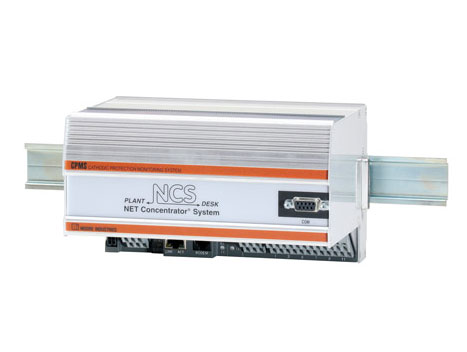California's largest oil spill in 25 years occurred when at least 101,000 gallons of crude oil spilled out of a pipeline near Santa Barbara. While the cause of the rupture is still unknown, federal investigators found that almost 80 percent of the pipeline had been worn down due to corrosion near the point where the break happened. This accident highlighted the need to take steps to mitigate the impact of corrosion on pipelines and other sites.
A popular method of achieving this is cathodic protection, where the important metal in a pipeline is made into a cathode. According to Corrosionpedia:

“Cathodic protection is a widely used method for controlling the corrosion of metallic structures in contact with most forms of electrolytically conducting environments such as soils, seawater and natural waters. Cathodic protection essentially reduces the corrosion rate of a metallic structure by reducing its corrosion potential, bringing the metal closer to an immune state.”
Larger pipelines use Impressed Current systems to protect the metal. According to Corrosionopedia, “Impressed Current systems employ inert anodes and use an external source of DC power to impress a current from an external anode onto the cathode surface.”
Engineers need to know that the cathodic protection system is in place and operating at the right levels to maintain a safe operating environment. Moore Industries helps companies with this with our CPMS Cathodic Protection Monitoring System. It is specifically designed to monitor the critical current and voltage levels of one or two transformer rectifiers in Impressed Current Cathodic Protection Systems. It provides an engineered, field rugged and compact monitoring solution for reading and data logging specific Vdc, mV and mA inputs with embedded digital communication protocols including MODBUS/TCP over Ethernet and dual MODBUS RTU ports (master or slave capabilities).
The CPMS also accepts up to four discrete (contact closure) inputs from each impressed current system. Using an internal control engine, the CPMS can be programmed with internal set points that relate to normal operating conditions within the cathodic protection system. Should monitored parameters go outside of selected limits, or if power to the cathodic protection system is lost, the CPMS alerts of the unwanted conditions at the control system over the data link.
The CPMS offers several advantages:
- Flexibility: CPMS I/O capabilities can be expanded with the addition of Moore Industries' NCS NET Concentrator System modules. This allows the CPMS to handle current inputs and outputs, temperature (RTD and thermocouple) inputs, additional discrete inputs and relay outputs.
- Ease of Installation and Use: The CPMS sets up in minutes using simple web-based software. Special skills or programming languages are not required. It also offers a standard and open OPC interface that delivers plug-and-play integration with popular off-the-shelf PC-based HMI/SCADA packages.
- Data Logger with Battery Backup:For historical performance trending and analysis, the CPMS can archive up to 64,000 time and date stamped values.
- GPS Time Receiver: The CPMS can be ordered with a GPS Time Receiver option that allows the syncing of CPMS clocks in order to control multiple rectifiers. This facilitates monitoring the effectiveness of the cathodic protection system and structure.
Do you want more information? Download the data sheet. Or visit the catalog.
Need to get price or availability or have a technical question?
Send us a message using E-Help.








